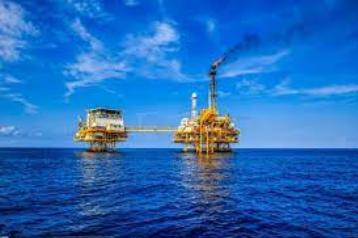Design Principles – Key Considerations in Engineering Offshore Structures
Designing offshore structures is a complex process that requires careful consideration of numerous factors to ensure safety, functionality, and efficiency in challenging marine environments. The principles guiding this process balance engineering innovation, environmental resilience, and operational needs. Below is an in-depth discussion of the key considerations in designing offshore structures.
1. Environmental Factors
Offshore structures must withstand harsh marine conditions, including wind, waves, currents, and seismic activity. Designers need to account for:
- Wave Forces: Understanding wave heights, periods, and directions is critical to ensure the structure’s stability. Computational models such as linear wave theory or non-linear wave analysis are commonly used.
- Wind Loads: Wind speed and turbulence can significantly impact surface structures, requiring aerodynamic design considerations.
- Currents: Ocean currents exert lateral forces on submerged and floating components, affecting stability and mooring systems.
- Seismic Activity: In seismically active regions, structures must be designed to absorb and dissipate energy from earthquakes.
- Ice and Snow: In Arctic environments, ice forces and snow accumulation must be addressed.
2. Structural Integrity and Safety
Ensuring the structural integrity of offshore platforms is paramount due to the high-stakes nature of operations.
- Load Analysis: Offshore structures must handle multiple loads, including:
- Dead Loads: The weight of the structure itself.
- Live Loads: Variable weights from equipment, personnel, and materials.
- Environmental Loads: Forces from waves, winds, and currents.
- Accidental Loads: Impacts from ships or dropped objects.
- Material Selection: Corrosion-resistant materials such as high-strength steel, titanium, or composite materials are essential to combat the harsh marine environment.
- Fatigue Analysis: Continuous exposure to cyclic loads from waves and wind can cause fatigue. Designs must include redundancies and stress-reduction techniques to mitigate failure risks.
- Safety Factors: Conservative safety factors are used to ensure performance under worst-case scenarios.
3. Hydrodynamic and Aerodynamic Considerations
Hydrodynamic and aerodynamic forces significantly influence the design of offshore structures, especially floating platforms and subsea components.
- Drag and Lift Forces: Structures are shaped to minimize drag and optimize stability.
- Mooring Systems: For floating platforms, mooring lines and anchors must provide stability while accommodating movement due to waves and currents.
- Dynamic Response: The interaction between the structure and water can lead to resonance. Engineers use damping mechanisms to prevent catastrophic oscillations.
4. Foundation Design
The foundation is crucial for fixed platforms and subsea structures. The design must account for soil conditions and seabed stability.
- Geotechnical Analysis: Understanding the seabed’s composition (sand, clay, rock) is essential for selecting foundation types.
- Foundation Types:
- Piled Foundations: Steel piles driven into the seabed provide support for fixed platforms.
- Gravity-Based Foundations: Heavy concrete bases rely on their weight for stability.
- Suction Caissons: Large cylindrical anchors use suction to secure structures to the seabed.
5. Corrosion Protection
Marine environments are highly corrosive due to saltwater, humidity, and biological growth. Corrosion protection strategies include:
- Cathodic Protection: Using sacrificial anodes or impressed current systems to protect steel components.
- Coatings: Specialized paints and coatings provide a protective barrier against saltwater exposure.
- Material Selection: Using non-corrosive materials such as stainless steel or composites in critical areas.
6. Operational Efficiency
Offshore structures must support their intended functions efficiently and safely.
- Space Optimization: Deck layouts must maximize space for drilling, production, and living quarters while maintaining safety.
- Accessibility: Design includes easy access for maintenance and repair of equipment and systems.
- Energy Efficiency: Integrating renewable energy sources or optimizing power distribution can reduce operational costs.
7. Sustainability and Environmental Considerations
Environmental regulations and the global push toward sustainability require designs to minimize environmental impact.
- Waste Management: Facilities must handle waste materials responsibly to prevent ocean pollution.
- Renewable Energy Integration: Incorporating wind, solar, or wave energy technologies into the structure’s design.
- Biodiversity Protection: Ensuring the structure does not harm marine ecosystems by selecting non-invasive anchoring techniques and materials.
8. Human Safety and Comfort
Designs must ensure the safety and well-being of personnel working on offshore platforms.
- Safety Systems: Fire suppression, lifeboats, and emergency evacuation routes are mandatory.
- Ergonomics: Workspaces and living quarters must provide comfort and functionality in harsh conditions.
- Structural Monitoring: Real-time sensors and systems detect structural issues, enabling preventive maintenance.
9. Lifecycle Cost and Maintenance
Minimizing lifecycle costs while ensuring reliability is a critical design goal.
- Maintenance Planning: Designs should allow easy access for inspection and repairs.
- Modularity: Components should be replaceable without extensive downtime.
- Cost-Benefit Analysis: Balancing initial investment with long-term operational savings is essential.
Conclusion
The design of offshore structures is a multidisciplinary endeavor that integrates environmental science, materials engineering, hydrodynamics, and sustainability. By addressing these key considerations, engineers can create robust, efficient, and safe structures capable of withstanding the demanding conditions of the marine environment.

